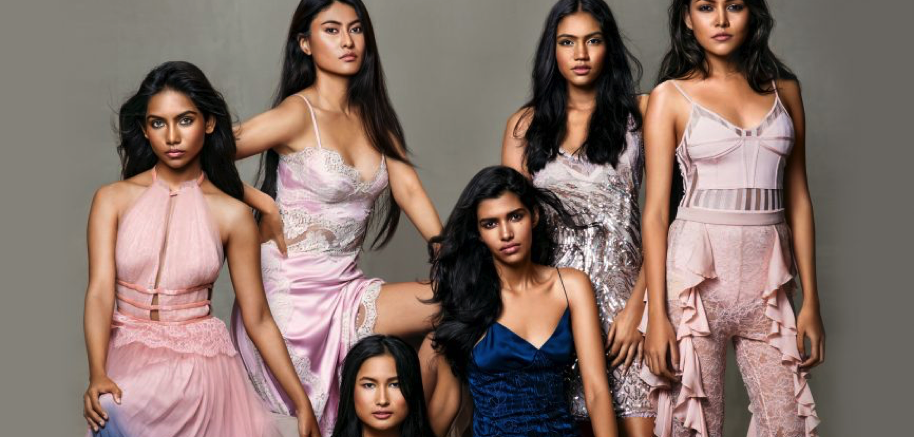Introduction
As a brown person, I have always felt unheard and unrepresented. Growing up, mainstream media constantly churned out whitewashed content for children like me. The movies I watched, the books I read; they were all about girls with pale skin and blue eyes. They say your childhood shapes you. Well, I spent a large part of mine struggling to accept my identity. I thought it unfair that I have dusky skin and dark eyes. I assume that this was a struggle every person of colour faced growing up.
In a rapidly developing world, with modern amenities like social media, we are all more connected today. From Africa, to Asia, to Europe, we now share a global culture in addition to our separate ones. The world is more ‘globalised’. It is easy to imagine a picture of people of all colours. Then why is this global culture predominantly white? Why is it not inclusive of BIPOC?
It is important to note that lack of representation in media plays a huge role in this cultural gap. Media and culture are inseparable. Media shapes and nurtures culture. While today’s children will grow up seeing more representation than I ever did, lack of representation is still a major issue.
In this article I will focus on South Asian (brown) representation in media and culture.
Why do we need representation?
Simple. We need representation because we exist. We need representation because we are a part of society too.
South Asians make up a fourth of the world’s population. This means that every 1 person in 4 is likely to identify as brown. Yet, our voices are unheard. Our struggles are not talked about. Our beliefs and culture are silenced on a global level.
To understand this, let’s look at the beauty industry. We live in a world where beauty standards are whitewashed. From the colour of our skin, to the shape of our nose, they all have to fit Eurocentric standards. Why do all the books we read and the shows we watch define ‘beautiful’ people as Caucasian?
How can we address lack of representation?
The key to tackling this is to introduce more brown people into media. Cast more brown people in shows. Create more brown shows. This should not mean that we include only brown people who fit Eurocentric standards. We need to include brown people, of every shade, and every culture. Include both fair and dark brown people.
Of course, shows and content based on brown people do exist. However, such content is very local. For example, you can see numerous brown shows on Netflix India that may not be globally available or marketed. It is only recently that the number of shows with brown people have started to increase. Mind you, I am talking about shows that include brown people here. Not shows that center around South Asians. We do not have a lot of the latter. Never Have I Ever, a coming-of-age series, broke the standard recently by having a brown main character! Shout out to Mindy Kaling, who co-created it! It is so heartwarming to see brown girls being able to relate to Maitreyi Ramakrishnan’s character Devi. While the show has its shortcomings it is a peak moment in brown representation.
The disappointing fact here is that it took this many years for brown girls to get a show based on them. Never Have I Ever only started streaming in 2020. For all these years, brown girls like me had to try to relate to white characters with white parents and friends. Hannah Montana’s father supported her dreams to pursue music. My brown parents would never!
In addition, it is often brown creators who create content based on brown people. That is why it is so important to hire brown professionals. Book brown creatives. It took 126 years for Vogue to hire its first black photographer. This is proof of how we are constantly excluding people of colour.
Stereotypes
Moving away from South Asia, I have realised that the people outside view us all the same. Dhivehin (Maldivians), Punjabis, Nepalis; they do not exist. We are all just ‘brown’ people. We are all just South Asians.
I do not think that this thinking is inherently bad. I do not support separatism, and that is not my point. All I am trying to say is that my brown skin does not mean I celebrate Diwali. No, I cannot speak Hindi. I identify as brown, and still not as an Indian or Pakistani. I’m simply tired of my identity being questioned because I might not fit brown stereotypes.
Media’s representation of brown people fuels these stereotypes. We often see one brown person in shows or movies. This character will often have an ambiguous identity. This means to say that the character’s identity will be a mix of different brown cultures. The character might speak Sinhalese yet dress up like a Bengali and celebrate Bhutanese holidays. This is unrealistic. If you are going to have a Sinhalese character, make sure she speaks Sinhalese. Make sure she dresses up Sinhalese. Make sure she celebrates Sinhalese festivals. If you are going to represent South Asians, make sure you represent us accurately.
Accurate representation also means not boxing us into stereotypes. Why is the brown kid in high school dramas always the smartest, and a class topper? Hollywood movies also like to add a yellow tint when they show our countries, to depict us impoverished and unhygienic. Not all South Asians are class toppers. Not all of us are unhygienic. Just like any other country, South Asian countries also have rural areas and urban areas. We do not live in a ‘yellow haze’ reeking of poverty and dirt. All these stereotypes do more harm than good when it comes to accurate representation.
Conclusion
The key to assimilating South Asian culture into the global culture is through representation in media. Globally popular platforms like Netflix, and even Hollywood, should be putting in more effort to include people of colour.
People of colour should not have to be begging for representation in the first place. Then again, slavery, a much bigger atrocity, should not have existed either in the first place. Why do people of colour have to constantly beg and fight for basic rights?
We cannot solve the lack of representation problem by just putting one brown model on a magazine cover. Or even by creating a coming-of-age movie about a brown girl. Representation should never be a one-time thing. It has to be always there. Brown people will always exist. So why not find more ways to represent us, include us?
Will there come a day when my little brother will no longer pick up the peach crayon to colour a drawing of himself? I want to be able to show my future daughter a Disney brown princess, instead of just Cinderella and Snow White. I want to live in a world where my people are comfortable and confident in their identity as South Asians. Here’s to brown culture!
About The Author

Layaal Ali is a Maldivian law student currently residing in Malaysia. A staunch feminist, she believes strongly in bringing down the patriarchy. She enjoys reading good books, and writing about women’s rights.
Picture Credit: Vogue
Edited by: Shruti Kapoor
Blog posts by this author:
Image Source: Pinterest
